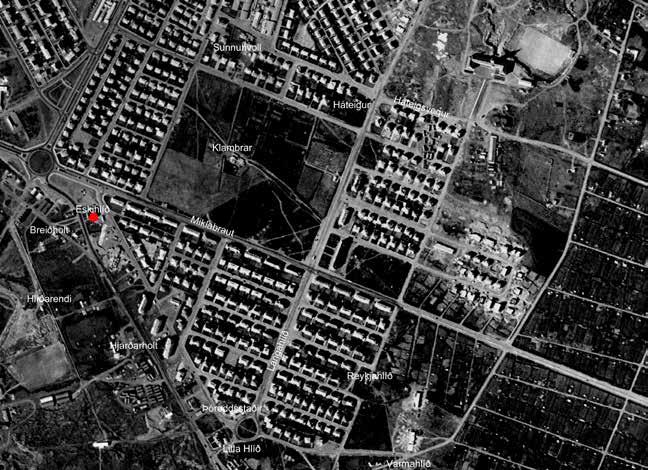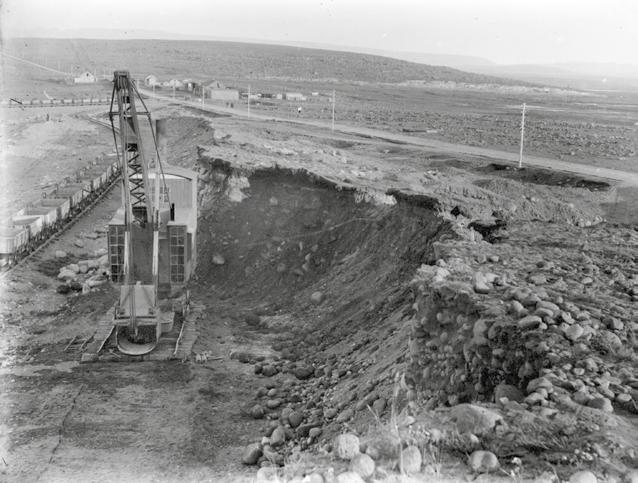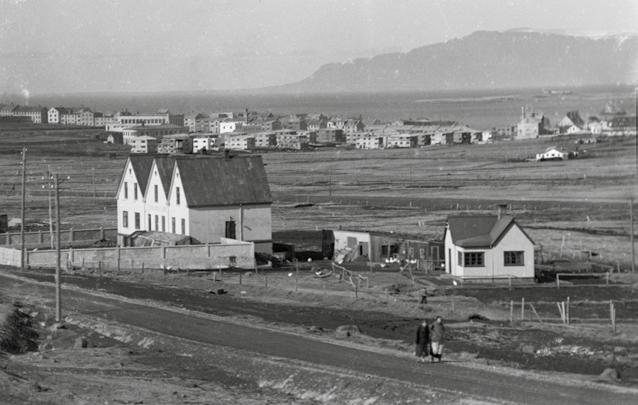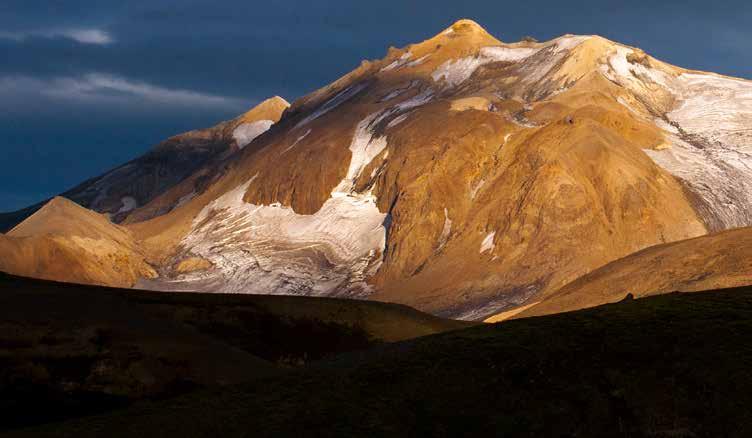
3 minute read
Farmsteads in Reykjavík Eskihlið
In the late 19th and early 20th centuries, drainage of the marshland began in the Reykjavík area. The drained land was allocated for farming under leases with inheritance rights. Grass fields were cultivated on farms and smallholdings in these areas, where animal husbandry and agriculture were established. Such farms played an important role at that time, when dairy products were always in short supply in the growing town of Reykjavík.
With the expansion of Reykjavík during and after World War II and the construction of new districts east of the old town, most of the farms made way for new housing, but in some cases the original farmhouses were integrated into the developments and remain standing among homes of a later period.
One such farm was Eskihlíð. The farmhouse buildings remain standing at the western end of the street of the same name. Watchmaker Magnús Benjamínsson (1853-1942) built a half- stone house here in 1892, which he named Eskihlíð (now Eskihlíð 2-4).
Aerial photograph from 1954. Here we can see some of the farms built in this area in the the early 20th century. Information on Háteigur farm and Sunnuhvoll farm can be found at the corner of Háteigsvegur and Rauðarársstígur. Information on Reykjahlíð farm can be found on Stakkahlíð road.
Around 1915. A digger at the mine that was used to build the Reykjavík harbour. In the far back we can see the Eskihlíð farm to the left of the road. Photo: Magnús Ólafsson

Eskihlíð was, at that time, an alternative form of the placename Öskjuhlíð. The farmstead stood on the north side of the main road that led out of Reykjavík via Öskjuhlíð, known as the Hafnarfjörður Road, and later the Reykjanes Road (now Skógarhlíð). In the first half of the 20th century several houses were built to the south of the road, also known by the Eskihlíð name (Eskihlíð B, C and D). These are no longer standing. In 1911 Ingimundur Guðmundsson (1876-1912) lived at Eskihlíð, where he built a barn at the west wall of the farmhouse, and a cattleshed and stable at the north side. For many years Eskihlíð was a large farm, especially in the time of Geir Gunnar Gunnlaugsson (1902-1995), who bought the farm in 1934 and established a large dairy farm.
Geir extended and altered the old house and built new outhouses – a cattleshed and barn – at the north side. The buildings remain largely as they were in his time. In 1945 the inheritance rights to much of the estate were revoked, when development of the Hlíðar district began. Geir continued to run his dairy farm until the mid-1950s, while building up a new farm at Lundur in Kópavogur, to where he moved in 1961. In 1959 the first Hagkaup store was opened by Pálmi Jónsson in the former Eskihlíð cattleshed. His company would later come to dominate retail trade in Iceland. From 2003-2013 the old farm buildings housed the Fjölskylduhjálp Íslands (Family aid) charity. In 2004 Konukot was established at the premises, charity that provides overnight accommodation for homeless women.

Þóroddsstaðir in Reykjavík around 1935-1940, now Skógarhlíð 22. Behind is the area where the streets Eskihlíð, Blönduhlíð, Drápuhlíð, Mávahlíð, Barmahlíð and Miklabraut came later. Far away is the residential area Norðurmýri under construction. To the right you can see the farm Klömbrur and Klambratún. Photo: G Ásgeirsson's amateur studio
Seen west along Miklabraut, on the left an apartment building at Miklabraut and Barmahlíð under construction around 1945. To the right Rauðarárstígur, Miklatún (Klambratún) and the farm Klömbrur can be seen on the far right. The National Hospital towering over the houses in Norðurmýri. Bollagata, Guðrúnargata, Kjartansgata and Hrefnugata. Photo: Sigurhans Vignir












